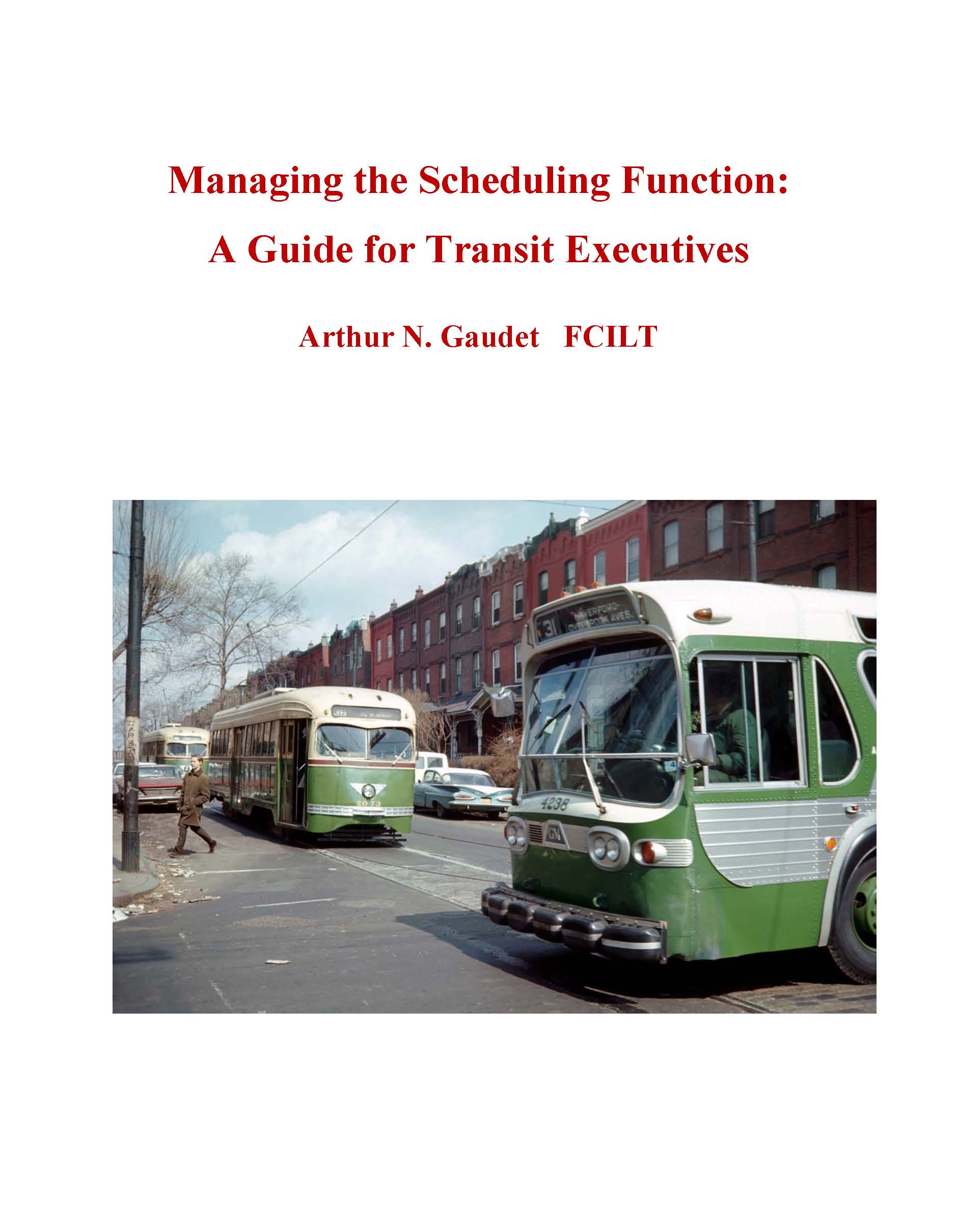Managing the Scheduling Function hard copy at a price of $37.50 U.S. Dollars, including postage (and Texas Sales Tax).
The Tw0-Book Combination, One On Time Performance in the Transit Industry and One Managing the Scheduling Function, to U.S. and Canada, is priced at $75.00 USD.
Managing the Scheduling Function is Available also in emailed PDF format, at a price of $20.00. Please be sure to double-check your email address on the purchase document, as this will be used to send your PDF copy.

Chapters Include:
1. Introduction
2. The Scheduling Dance
3. The Process
4. Playing Well With Others
5. Staffing -- Operator FTE Projections
6. Fringe Benefit Considerations
7. Extra Board Requirements
8. Costing Principles
9. Collective Bargaining Agreements
10. Performance of the Scheduling Department
11. Let's Hire a Transit Scheduler
Appendix 1, Sizing the Extra Board -- A Scientific Approach
This book is intended for CEO's, General Managers, other Senior Management -- and those on an upward career track toward those positions.
Of course, much of the information is also useful to Planners and Schedulers too.
The Transit Scheduling Function is a combination of science and art, with mysteries that are not easily understood. Mathematics sure, but also creativity,
foresight, intuition are involved. This sometimes creates difficulty for Senior Managers -- those responsible for managing this crucial function,
who can quantify the hard data but may not clearly see other opportunities to maximize return on the labor investment.
Consider that roughly 70-80% of a transit system's costs are dedicated to Operations and Maintenance. The Scheduler has direct responsibility for
70-80% of that portion of the budget. Beyond simple statistics, such as Pay to Platform ratio, Overtime, Guarantee, Spread Premiums, many other
costs are influenced.
Some are directly influenced. In one case, a myopic focus on reducing Overtime (actually, the 1/2 time pay premium) resulted in increasing both
the number of FTE's needed (thus fringe benefits) and Guarantee time.
Others are less obvious -- and harder to measure. One example is allowing a reasonable amount of scheduled Overtime. Investing the 1/2 time
pay premium may pay returns in reduced turnover by increasing actual take-home pay (thus hiring/training costs), possibly also reducing
absenteeism (if Operators must make all reports to earn their weekly Overtime premium). The scheduled overtime can directly reduce the
FTE's (fringes again). If absenteeism is truly reduced, ultimately there may be fewer staff needed for the Extra Board (fringes again).
These are examples of areas explored in Managing the Scheduling Function.
